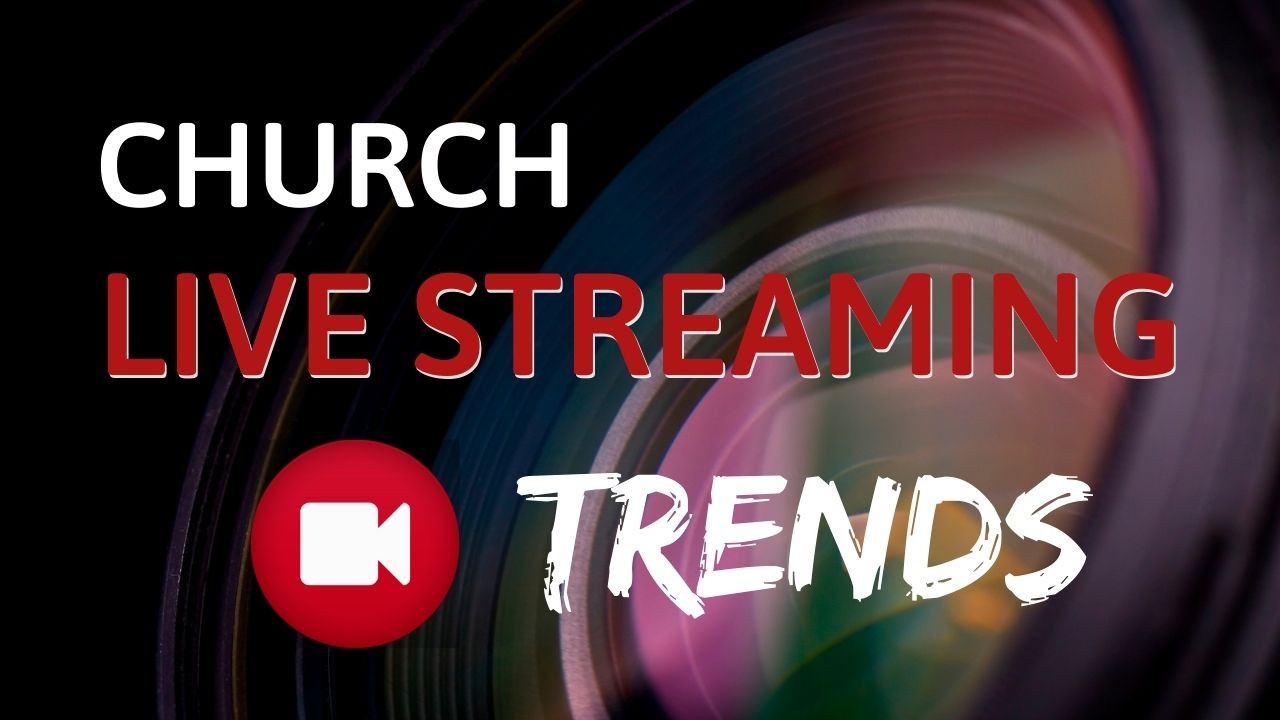Church Live Streaming Trends

Live streaming technology has become an important topic for churches, pastors, and tech teams looking to deliver a quality online worship experience for their congregation. But the big story for churches isn’t the concept of live streaming or even the technology required. The focus now turns to engagement and how to blend onsite worship with the online experience.
There are several emerging trends for creating a quality live streaming worship experience that can benefit the entire congregation.
Broadcast vs. Engage
One of the most important decisions a church can make is where they live stream services. This choice leads to other factors that will affect congregation participation, outreach, and more.
Most of us are familiar with one-to-many broadcast platforms like Facebook Live or YouTube. There are many social media services that make live streaming simple for both the broadcaster and the viewer. However, there are several challenges with using a social media platform as the sole conduit for live-streamed worship services and sermons.
Many churches are taking a deeper look at how to increase real engagement within their online community. This focus connects people with the worship experience and increases participation among viewers.
Embedding live chat feeds alongside the streaming video can help encourage engagement. This is something that social media apps and streaming services like Church Online Platform offer.
Innovative services like Altar Live provide a more immersive environment to increase real connection among viewers and invite meaningful participation during worship.
Curating a Hybrid Worship Experience
Many worship leaders and pastors know how challenging it can be to interact with an online congregation through the lens of a camera. The truth is that it takes intention and preparation to host a great live stream or hybrid worship service.
Engaging an in-person congregation along with online viewers also requires careful planning by the tech team. They must be intentional to offer a great viewing and listening experience for each group. Improving live streaming audio quality is the top concern for every church that hosts online worship. Increasing the video production value of the live stream can also create a more inviting and engaging experience.
Avoid a Live Streaming Blackout
Big streaming services like Facebook and YouTube are notorious for shutting down or muting live streams, often without warning. This issue impacts churches that stream a full worship service and feature music that may be copyright protected. A church live stream or video can even be shut down with proper church music copyright licensing protections in place.
To avoid this, it is best to use a streaming service hosted on the church website or other dedicated platforms. Those options are not subject to the algorithms that many of the major social media companies use to block content.
Leveraging Live Streaming Technology to do More
One of the benefits of using live streaming technology is that it prepares the church for growth. This can lead to growth in congregation size, as well as increased small group attendance and community impact.
Churches can leverage their video and streaming technology to expand into smaller multi-site locations. This change allows for a more intimate worship experience. Tech teams have been encouraged to think outside the box when setting-up live streaming solutions on a budget. And online tithing has seen increased use as more churches have embraced streaming worship.
To Go Live or Pre-Record?
One of the most interesting trends in church streaming is how teams are choosing to produce an online worship service.
Some online-only churches are pre-recording the music portion of the service and then producing the sermon live. Others are doing both music and the sermon live. Many churches have chosen to only offer the sermon (no music) for online viewers.
Online watch parties, popularized by Facebook and YouTube, are a great way to use pre-recorded content for increased live engagement at a scheduled time.
The advantage of pre-recording content for a live stream is that greater production quality can be achieved. However, this approach can require special software and editing expertise depending on the production quality required.
Using live stream distribution services like Restream.io or Switchboard.live allows churches to reach several platforms simultaneously with recorded and live content.
It is vitally important that church leaders consider the overall communications strategy before deciding to host worship services online, regardless of the production, technology, and streaming service choices.
Thoughtful planning, setting clear tech goals, and managing expectations are important parts of a church’s decision-making process, especially when it comes to live streaming.
Note: this originally appeared as a guest post on the ChurchTechToday blog.
Download this Great Church Sound Live Streaming Checklist (printable PDF) and use it to help you create a quality live stream for your congregation.

More Live Streaming Resources
Check out some of these live streaming tools to improve your church live stream quality.
Please note that some of the links and discount codes included throughout this website are affiliate links and Great Church Sound and/or James Wasem will earn a commission if you decide to make a purchase. This is at no additional cost to you.
These are tools I personally have used or recommend because they are helpful and useful, not because of the commissions made if you decide to buy something.
Affiliate earnings and commissions help keep this site active and populated with fresh content. If you decide to purchase something through these links, I would like to say Thank You!





